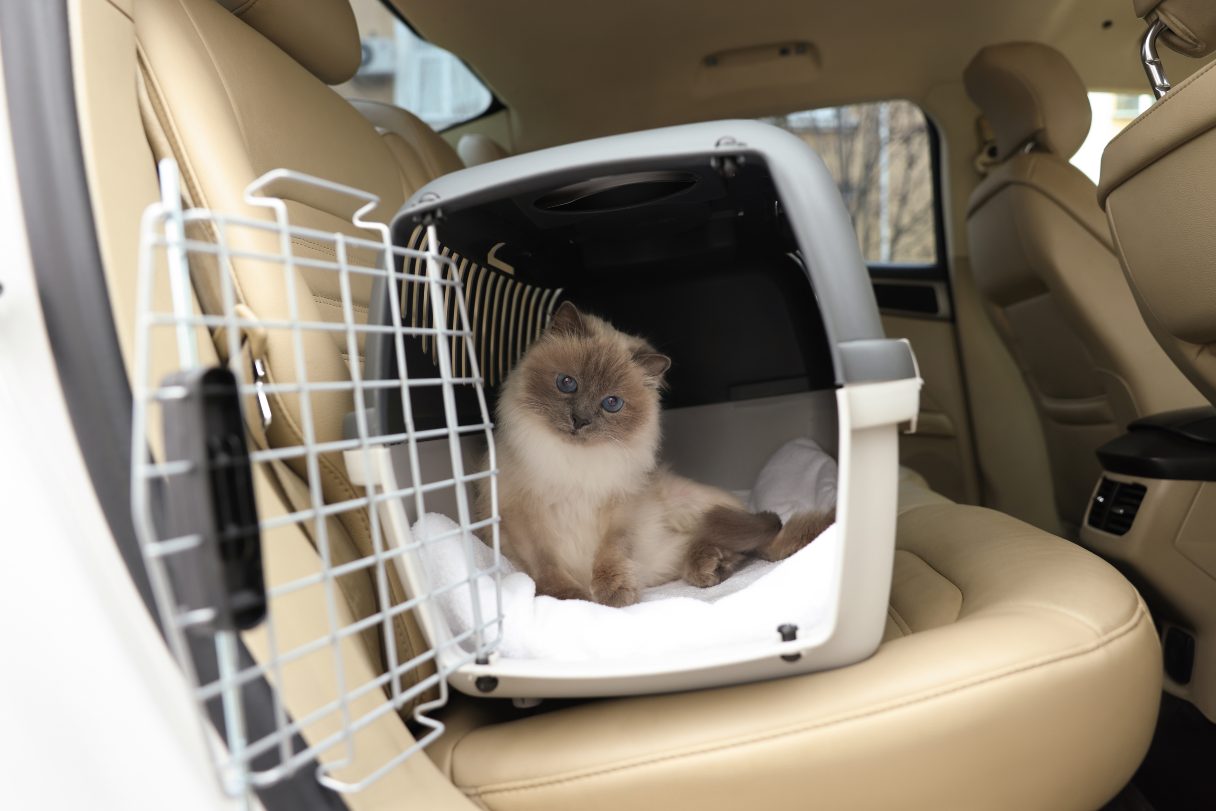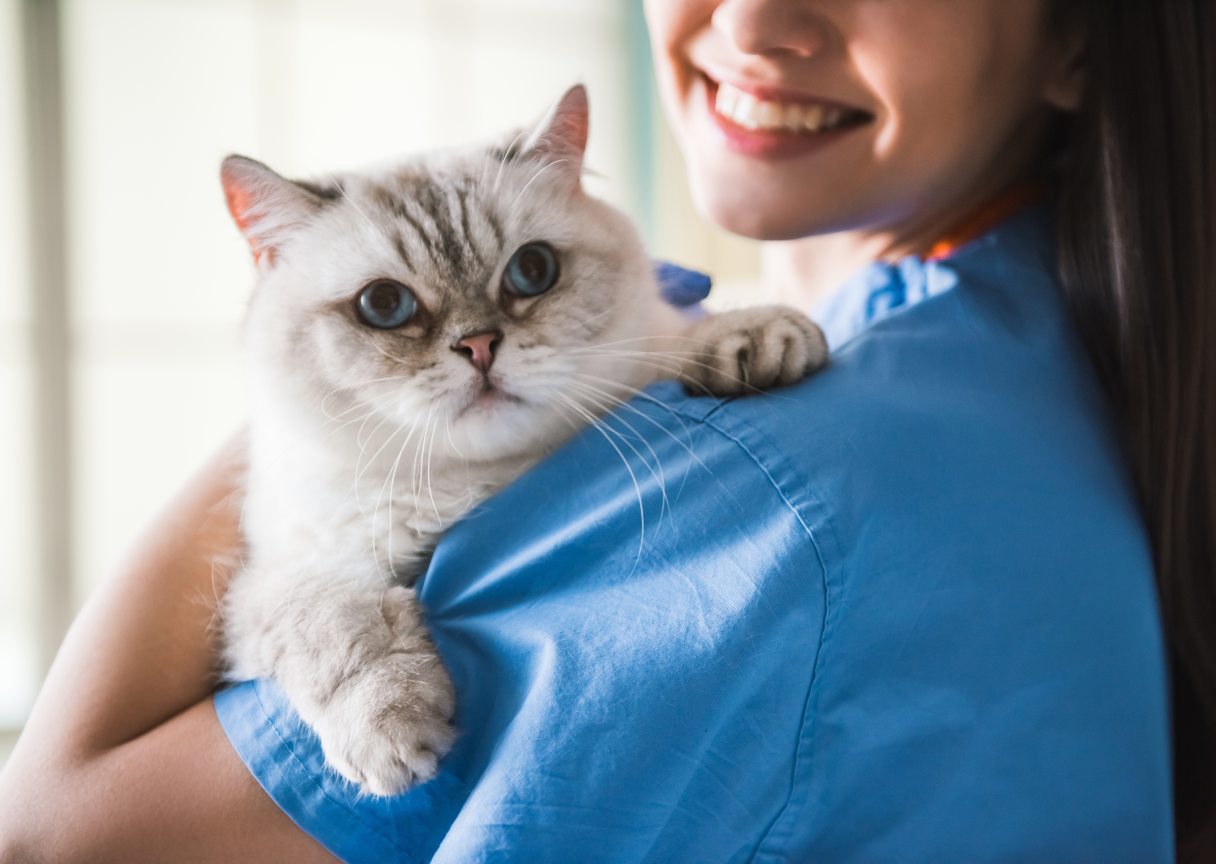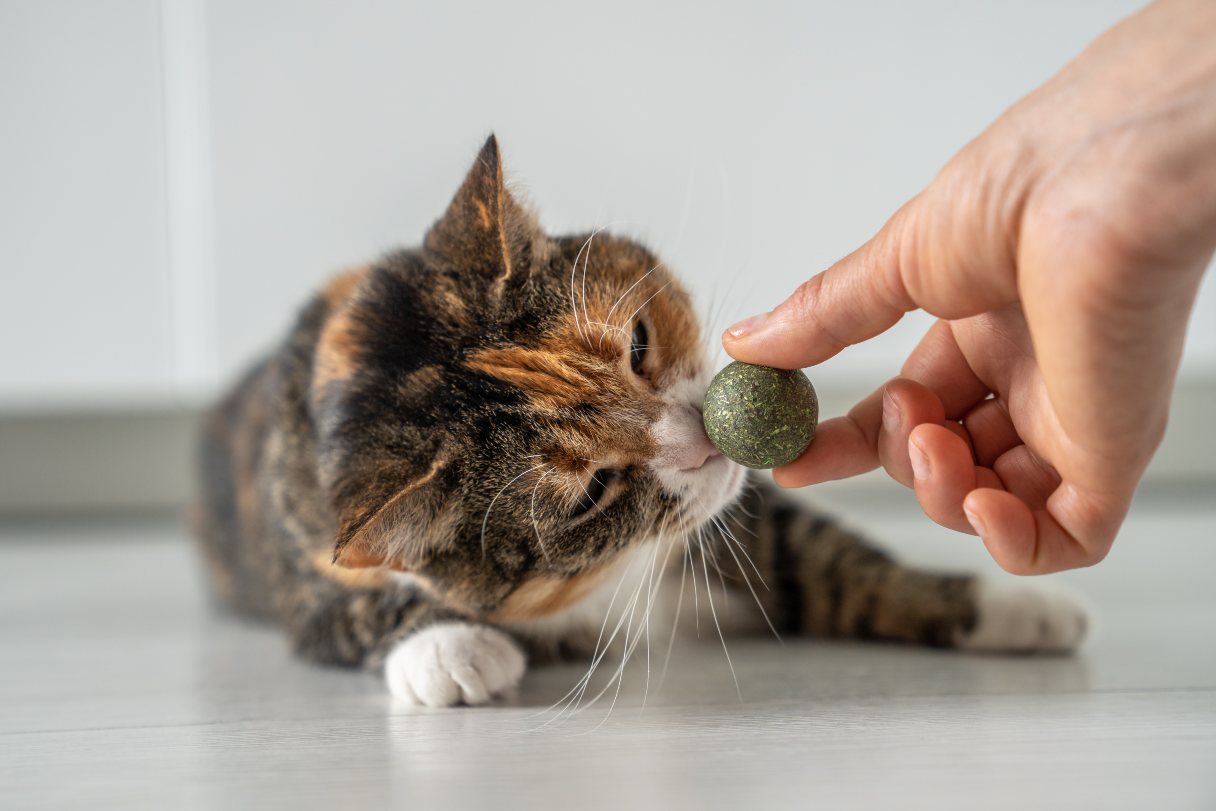Regular veterinary visits are essential for keeping your cat healthy and catching potential health issues early. In fact, the American Veterinary Medical Association recommends a yearly check-up for all cats, with more frequent examinations as needed for kittens, senior cats or those with medical conditions.1
But every cat owner knows that the process of getting your favorite feline into a carrier and traveling to your vet’s office can be stressful and challenging. Cats are naturally wary of confined spaces and unfamiliar experiences, making vet trips a source of anxiety for both pets and their people.2
Fortunately, with the right preparation and a calm approach, you can help your cat become more comfortable with carriers and routine vet visits.
Understanding Cat Behavior
Cats are creatures of habit. They like their territory, their routines and their familiar sights, sounds and scents. Most of the time, this isn’t an issue — it’s easy to keep a predictable routine that doesn’t involve travel or much of anything outside of the home (beyond their vet visits). Unlike dogs, cats aren’t usually in the car to go somewhere fun, so it’s more difficult to build a positive association with them being in the carrier and the car.2
So, your cat's stress is understandable: They're leaving home, confined in a carrier, traveling in a bumpy car and being taken to a place that has all kinds of new and potentially scary people and animals. On top of all that, they are then poked and prodded by strangers.2
While the carrier is essential for keeping your pet safe, your cat may begin to associate it with this negative experience, which can make it more difficult to get them into the carrier when it’s time for a trip to the vet. See the tips below on how to help build a positive association between your cat and their carrier.
Choosing the Right Cat Carrier
There are many types of carriers on the market, including wire crates, soft-sided carriers and hard plastic carriers with wire doors. Using a cardboard cat carrier is not recommended because crafty cats can easily break out of them. Look for a carrier that is strong but lightweight and waterproof. Some carriers feature a removable top that allows your cat to stay in the carrier during the examination.2
The carrier should be as easy as possible to get your cat in and out of — some carriers have doors on the top and front or back. It should be easy to clean and large enough for your cat to feel comfortable. If you are taking multiple cats to the vet at the same time, they should each have their own carrier.2
Tips to Get Your Cat Into the Carrier
The first step to a more successful vet visit is to start building a positive association between your cat and their carrier. If you get your pet as a kitten, start acclimating them to the carrier and car rides as soon as they settle into their new home.2
- Use positive reinforcement. This simply means rewarding your cat for the behaviors you want to encourage. It's a far more effective method for getting them into the carrier (and strengthening your bond) than forcing them in just to get it over with. Using force may make your cat even more scared and confused about what is happening, which will have the opposite effect of what you’re trying to achieve.3
- Provide regular exposure to the carrier. Don’t shove the carrier away in the closet and only bring it out once or twice a year; instead, keep it near one of your cat’s favorite resting or play spots. Put a food or water bowl (or some tasty treats) in there so that they are encouraged to explore, or add some bedding to make it a cozy spot for them to hang out. Putting an article of your clothing in there can give your cat a sense of familiarity.2
- Do some practice runs. Ideally, you’ll start this process weeks or months before you need to go to the vet so you can gradually move to the next step. Once your cat is used to seeing the carrier and going in it, close the door for a few seconds and see how they react. Once they are OK with the door being closed, pick up the carrier and take them to the car (just in and out). Then turn on the car, turn it off and take them out. The next step is to drive around the block for a few minutes, then to the vet’s parking lot and back.4
Traveling to the Vet’s Office
So, you’ve put in the preparation and are ready to go to the vet. Now what?
- Create a den for them. Besides putting an old shirt or something with a familiar scent in the carrier, some pets may feel more secure with a blanket over the sides, creating the feel of a den. Just make sure not to cover the entire carrier so your cat can get enough ventilation to breathe comfortably.4
- Turn up the (cat-specific) music. Studies have also shown that cat-specific music composed with cat vocalizations, such as purring, can have a therapeutic effect on cats, which could potentially help calm them while in the car. The same study showed fewer stress-related behaviors in cats listening to cat-specific music compared to those listening to classical music or no music at all.5
- Keep your cat in the carrier. This is for their safety, your safety and the safety of other people and animals.
- Be mindful about scheduling and checking in. Depending on where you live, there may be a cat-specific clinic near you that would be a calmer environment than a traditional vet office with dogs and other animals. If possible, schedule the appointment for a time of day when the office may be quieter, or wait in the car with your cat until your appointment instead of waiting inside.2
If you feel that your cat's anxiety is extreme, talk to your vet about synthetic pheromones that can help comfort your pet during the car ride, or even prescription medication to calm or even lightly sedate your cat before their appointment.2
Helping Your Cat Acclimate Back Home
When you get home after a vet visit, it may take some time for your cat’s anxiety levels to decrease. Set the carrier down and allow them to come out at their own pace. Some cats may not waste any time getting back to their favorite hiding spot to decompress. Speak calmly and let your cat relax. If you notice any hissing or growling at other pets, keep them separated until they calm down. Once your cat's behavior is back to normal, offer them a treat and some playtime.6
Easing Future Vet Visits for Your Cat
Helping your cat feel comfortable with carriers and veterinary visits takes time, preparation and positive reinforcement. By understanding your cat’s natural behaviors, choosing the right carrier and using gentle, rewarding techniques, you can significantly reduce stress for both you and your cat. Remember to remain calm and empathetic throughout the process so you can help turn vet visits into a more positive experience for your feline companion.
CareCredit Credit Card Financing for Cats
The CareCredit credit card is an easy way to pay for your cat’s annual checkups, food and products at veterinary practices in the CareCredit network.* Use our Acceptance Locator to find a veterinarian near you that accepts CareCredit to help keep your pet healthy and happy for a lifetime of love. CareCredit is there for you and your pet every step of the way; continue your wellness journey by downloading the CareCredit Mobile App to manage your account, find a provider on the go and easily access the Well U blog for more great articles, podcasts and videos.
In addition to pet care, you can also use your CareCredit credit card for dentistry, cosmetic, vision, hearing, health systems, dermatology, pharmacy purchases, spa treatments and so much more within the CareCredit network. How will you invest in your health and wellness next?
Author Bio
Abbie Mood is a freelance writer with more than 15 years of experience. She has worked with clients of all sizes to create compelling content and she has written for the American Kennel Club, Marriott Bonvoy, Women’s Health Online, Headspace and more.







